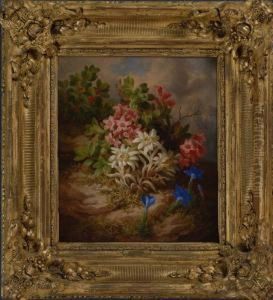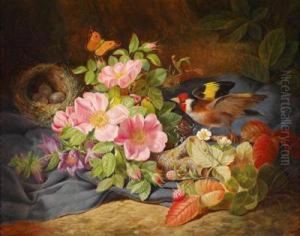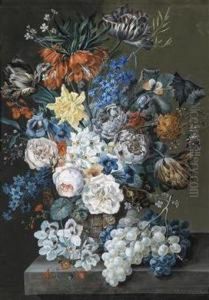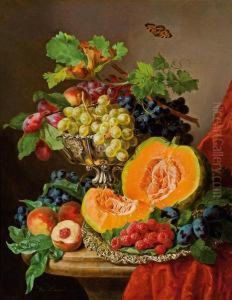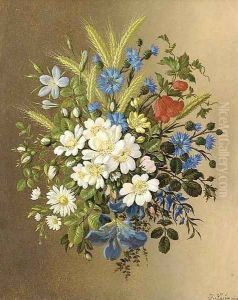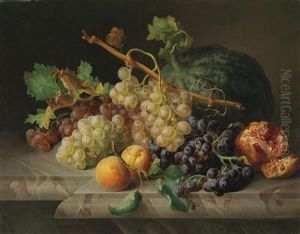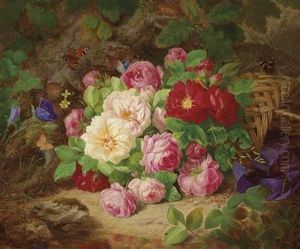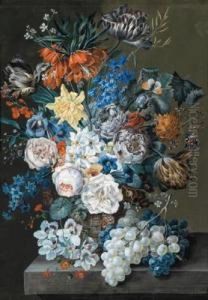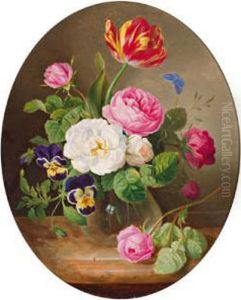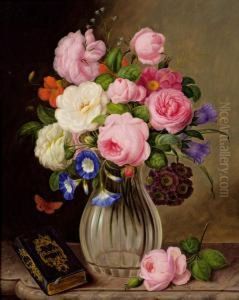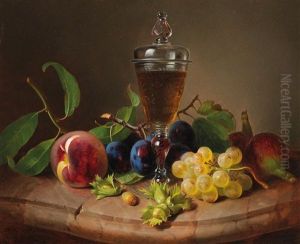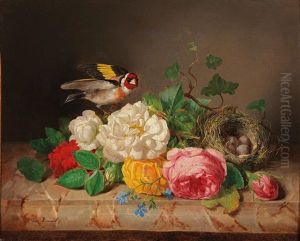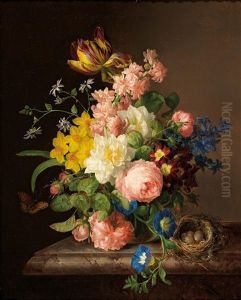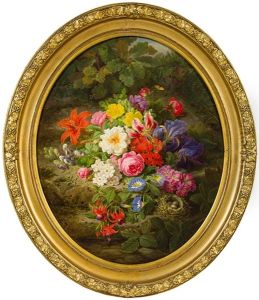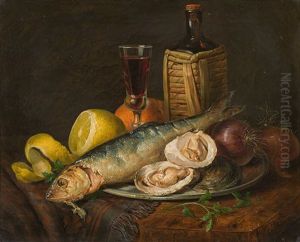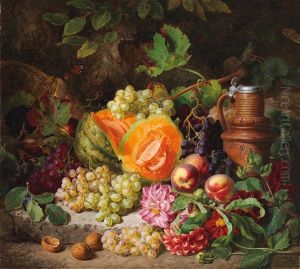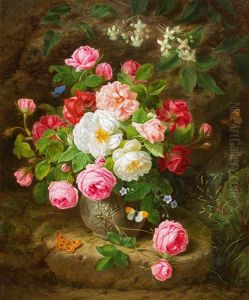Josef Lauer Paintings
Josef Lauer was an Austrian painter and lithographer known for his works during the 19th century. Born on March 27, 1818, in Vienna, Austria, he was part of a period in European art that was transitioning from the Romantic style to more realistic depictions. Lauer received his artistic training at the Academy of Fine Arts Vienna, which was a leading institution for art education at the time.
He gained recognition for his detailed flower paintings and still lifes, which were highly appreciated for their precision and vibrant coloration. Lauer's work reflects the Biedermeier style, characterized by a sense of order and calmness, which was particularly popular among the middle-class society of the Habsburg Empire during the 1815-1848 period.
His lithographs and paintings were often included in various publications and albums, which contributed to his popularity. Lauer's works were also sought after for decorative purposes, as his attention to botanical accuracy along with an aesthetically pleasing composition made them ideal for embellishing the homes of the bourgeoisie.
Despite his success as an artist, there is relatively little biographical information available about Lauer's personal life. He lived and worked in a time where the role of the artist was shifting, with the rise of the bourgeoisie and changes in the patronage system. Lauer died on August 21, 1881, in Vienna, leaving behind a legacy of work that is still appreciated by art enthusiasts and collectors. His contributions to the field of lithography and flower painting are particularly noted for their clarity, attention to detail, and the delicate interplay of light and shadow. Lauer's work is part of several museum collections and continues to be studied for its historical and artistic value.




